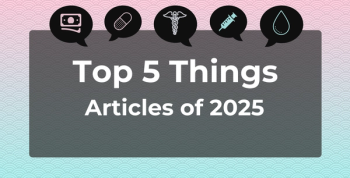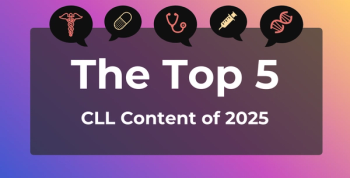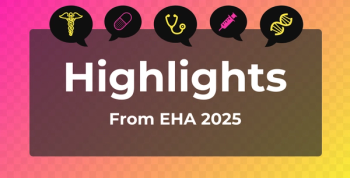
Ineligibility, Limitations to PR Uptake in Patients With AECOPD
Key Takeaways
- Only 18% of eligible acute exacerbation of chronic obstructive pulmonary disease (AECOPD) patients participated in post-discharge pulmonary rehabilitation (PR), with significant ineligibility issues limiting uptake.
- Education on PR referral and participation is essential to improve post-hospitalization care for AECOPD patients.
Two posters at the CHEST 2024 annual meeting revealed that 18% of eligible patients hospitalized with acute exacerbations of chronic obstructive pulmonary disease (AECOPD) participated in post-discharge pulmonary rehabilitation (PR), with ineligibility significantly limiting uptake.
Two posters presented at the
Education Needed to Boost Post-Discharge PR Enrollment in Patients With AECOPD
The first poster
The American Thoracic Society’s 2023 guidelines
Consequently, the researchers conducted a quality improvement initiative to assess current trends in PR enrollment after AECOPD hospitalization at Baystate Medical Center, a tertiary medical center in Springfield, Massachusetts.1 They aimed to improve PR uptake by understanding barriers to referral and participation.
The researchers conducted a retrospective analysis of patients admitted with AECOPD between December 1, 2022, and December 1, 2023; they identified eligible patients using the International Classification of Diseases, 10th Revision (ICD-10) code J.441. Additionally, the researchers identified those evaluated at the Baystate Medical Center pulmonary rehab facilities using the Current Procedural Terminology (CPT) code 94625.
Through this process, 1255 AECOPD encounters were identified, but 770 patients qualified for the final analysis. Of these patients, 140 (18%) were evaluated at the pulmonary rehab facilities. PR participants were older, with a mean (SD) age of 71.1 (8.6) years vs non-participants, who were 64.5 (10.7) years old.
Among both participants and non-participants, the hospital length of stay was highly variable, with a mean of 5.2 days. Additionally, the researchers found that only 3 patients hospitalized for over 7 days were seen at PR.
At discharge, 58% of the cohort required additional services. More specifically, 36.5% required visiting nurses and physical therapists, while 21% were discharged to nursing facilities. Lastly, the researchers emphasized that 197 patients had recurrent admissions within the study period, accounting for 46.4% of total AECOPD admissions; only 8 were evaluated at PR.
“...emphasis on PR referral and enrollment in those with recurrent admissions or pronged hospital stays might lead to a decrease in the health care burden,” the authors concluded. “More research is needed to elucidate barriers to referral and participation in PR.”
Ineligibility Significantly Limits Post-Discharge PR Uptake
Building on these findings, the second poster
Therefore, 3 physician or advanced practice registered nurse (APRN) investigators with clinical pulmonary experience performed independent hospital data reviews of all patients discharged with codes indicating acute respiratory failure or a COPD exacerbation over 1 year, beginning on June 1, 2022; they performed the reviews at 2 hospitals, 1 in a suburban setting and the other in an urban setting.
The investigators made decisions regarding eligibility/ineligibility based only on medical record data and the interpretation of selection criteria from a joint American Thoracic Society and European Respiratory
The researchers identified 360 eligible patients, whose mean age was 71 (12) years. Most patients were female (53%) and White (76%); also, 40% were of lower socioeconomic status, meaning they had Medicaid or no insurance. Full concordance on patient PR eligibility/ineligibility was 73%.
Based on the agreement of 2 of 3 investigators, the reviewers considered only 38% of patients eligible for PR. The category that contributed most to ineligibility was having an illness or frailty either too great or putting the patient at excessive risk for participation (45%).
Another was having cognitive, psychiatric, or substance abuse issues that would preclude full PR participation (24%). Other categories that contributed to patient ineligibility were incorrect COPD diagnoses leading to hospitalization (19%), being institutionalized post-discharge (9%), and a language barrier (4%).
“Reported percentage uptake would likely increase if only eligible patients were analyzed,” the authors concluded. “...A larger prospective study should be considered.”
Overall, both posters underscore the significant underutilization of post-discharge PR among patients hospitalized with AECOPD and call for strategies to increase uptake by targeting eligibility criteria and participation barriers.
References
- Abdulelah M, Ingemi M, Flores NJ, Gurung P. Trends in pulmonary rehab enrollment following admission for acute exacerbation of COPD. Poster presented at: CHEST Annual Meeting 2024; October 6-9, 2024; Boston, MA. doi:10.1016/j.chest.2024.06.3387
- Rochester CL, Alison JA, Carlin B, et al. Pulmonary rehabilitation for adults with chronic respiratory disease: an official American Thoracic Society clinical practice guideline. Am J Respir Crit Care Med. 2023;208(4):e7-e26. doi:10.1164/rccm.202306-1066ST
- Spitzer KA, Stefan MS, Priya A, et al. Participation in pulmonary rehabilitation after hospitalization for chronic obstructive pulmonary disease among Medicare beneficiaries. Ann Am Thorac Soc. 2019;16(1):99-106. doi:10.1513/AnnalsATS.201805-332OC
- OO HH, Wilcox D, Elsankary O, et al. A high percentage of patients hospitalized for COPD exacerbations do not meet accepted inclusion/exclusion criteria for participation in pulmonary rehabilitation. Poster presented at: CHEST Annual Meeting 2024; October 6-9, 2024; Boston, MA. doi:10.1016/j.chest.2024.06.3387
- Spruit MA, Singh SJ, Garvey C, et al. An official American Thoracic Society/European Respiratory Society statement: key concepts and advances in pulmonary rehabilitation. Am J Respir Crit Care Med. 2013;188(8):e13-e64. doi:10.1164/rccm.201309-1634ST
Newsletter
Stay ahead of policy, cost, and value—subscribe to AJMC for expert insights at the intersection of clinical care and health economics.







































